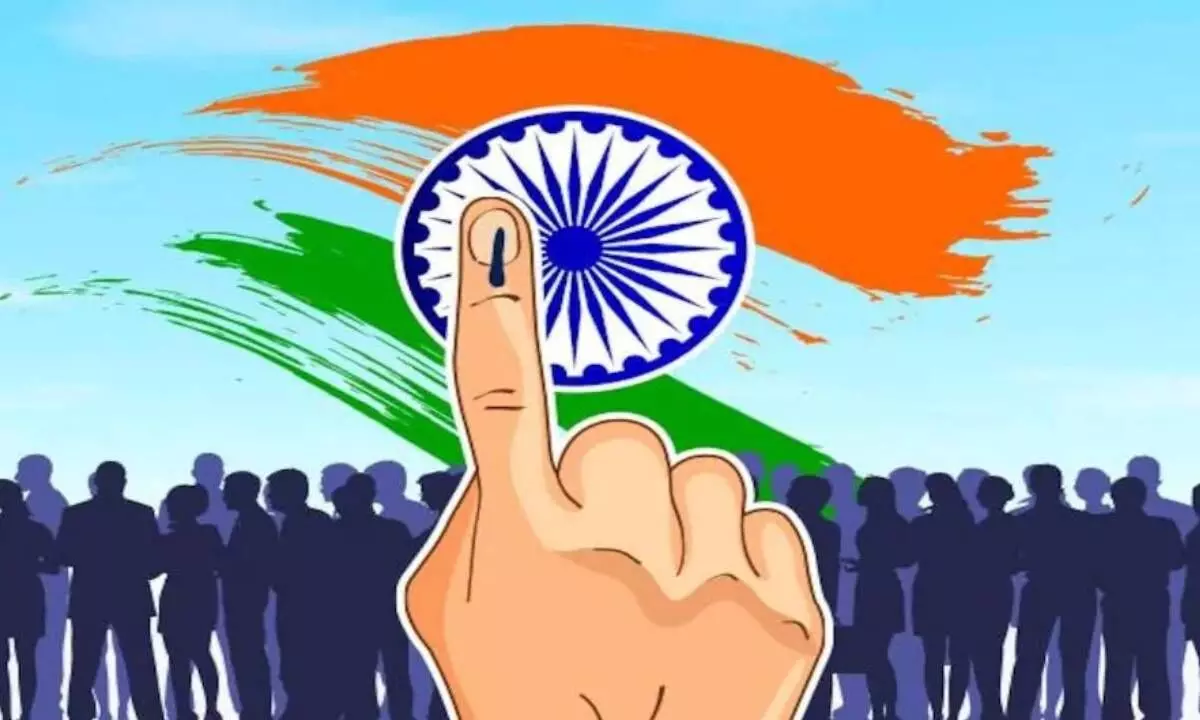Election manifestos must focus on development
Parties should stop offering freebies that lack economic rationale
image for illustrative purpose

The recent conclaves of the ruling National Democratic Alliance (NDA) and the newly formed Opposition coalition showed that all political parties have set their sights firmly now on the 2024 general elections. The NDA meeting predictably relied on Prime Minister Narendra Modi to set the tone while the other group, named Indian National Developmental Inclusive Alliance (INDIA), was busy gathering the faithful and trying to resolve inner contradictions. What was significant for any observer of the economy was Modi’s declaration that elections would be fought on the plank of development. If this proves to be the case, it brings a welcome focus on basic issues rather than allowing Hindutva or caste-related themes into the campaign trail.
As for the INDIA team, for the time being it has set up a coordination committee and will probably give an inkling of its campaign strategy in the days to come.
Development should ideally be at the heart of all election manifestos. In many cases, these issues are highlighted in the documents presented before the public but the actual focus ends up being on subjects that have nothing to do with the basic requirements of the common man. The phrase “roti kapda aur makaan” (food, clothing and shelter) was in the past touted by many a political party as their guiding mantra but such essential needs have been pushed to the background in the din of electioneering.
It is in this backdrop that one must consider the latest report released by Niti Aayog on the state of multi-dimensional poverty in the country. Its finding is that multi-dimensional poverty has fallen from nearly 25 per cent in 2015-16 to about 15 per cent in 2019-21. In effect, it says that an estimated 135 million people have been pulled out of poverty while the intensity of deprivation experienced by the poor has also dipped in these five years.
The term “multi-dimensional poverty” refers to acute deprivations in health, education and standard of living based on parameters approved by the United Nations. The decline in poverty levels, according to the report, has been most rapid in rural areas where the incidence has fallen from 32.59 per cent to 19.28 per cent. As for the states with highest poverty levels, it is no surprise that these continue to be those in the northern region. Bihar, Jharkhand, Meghalaya, Uttar Pradesh and Madhya Pradesh have the highest percentage of population in the poor category. On the other hand, Delhi, Kerala, Goa and Tamil Nadu have the least number of people facing multidimensional poverty along with union territories.
Urban areas also saw a fall in poverty levels with a decrease from 8.65 per cent to 5.27 per cent over the same period. The intensity of poverty similarly fell from 47 to 44 per cent. The data has been compiled based on the National Family Health Survey of 2019-21 and the parameters include nutrition, child and adolescent mortality, maternal health, years of schooling, school attendance, cooking fuel, sanitation, drinking water, electricity, housing, assets and bank accounts.
It is this kind of data that needs to be examined by political parties before finalising their manifestos and election strategies. It must be noted that the highest poverty levels remain in the northern region, especially in what is termed as the Hindi heartland. The multidimensional poverty ratio is 33.7 per cent in Bihar, 28.8 per cent in Jharkhand, 23 per cent in Uttar Pradesh and 20.6 per cent in Madhya Pradesh. In contrast, it is only 0.55 per cent in Kerala, 2.2 per cent in Tamil Nadu, six per cent in Andhra Pradesh and 7.5 per cent in Karnataka. Clearly the northern states need to learn a lesson or two from those in the south.
While the report highlights the progress made in reducing poverty, the fact is that there are huge swathes of this country where people are still living in dire conditions.
The data remains depressing for a state like Bihar where over 50 per cent of women are deprived of adequate nutrition while a similar percentage lacks access to modern sanitation. In such a scenario, rationality and logic point to development becoming the major plank for all political parties.
At the same time, this should not be used as an opportunity to offer freebies that lack economic rationale. Improving the quality of life for the masses can be undertaken by implementing schemes that provide subsidies and benefits to those in need without bankrupting the exchequer. In addition, the expenditure on education and health needs a sharp increase in most states as these are neglected but have a big impact on poverty levels.
The bottom line is that political parties need to focus on basic needs rather than using their campaigns to needlessly heighten tensions over religion and caste issues.

